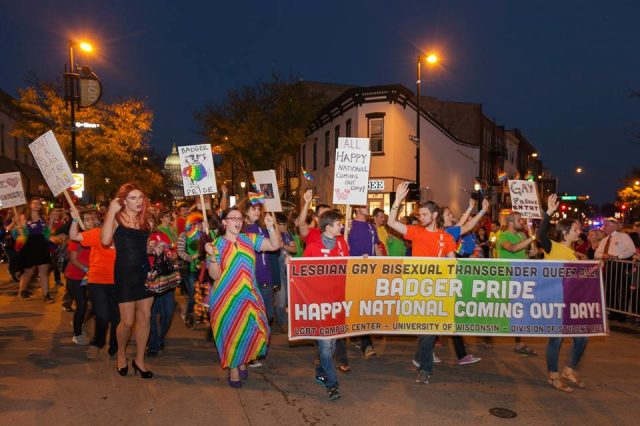This year marks 25 years of programming, safe space creation, and transformation for UW-Madison’s LGBT Campus Center.
Founded in 1992 by Alnisa Allgood, the center has undergone several changes in the last two and half decades having been housed in over four different locations and originally functioning as a student organization before finding its home in the historic Red Gym as a facet of the Division of Student Life.
The center’s most notable work has been in recognizing the intersectional needs of LGTBQ students from numerous racial, ethnic, and religious backgrounds.
The LGBT Campus Center is the only university-based center with a position dedicated to servicing queer students of color with its Crossroads program which was created in 2011, according to the center’s interim Assistant Dean and Director, Katherine Charek Briggs.
With a permanent staff of four the center is small, but mighty in its work, impact and reach.
“Whenever I think about the center I think about it in three parts,” said Crossroads Coordinator Tiffany Lee. “We hold the space open and that feels really vital to me to have space for people to come and do what they need. The second part is programming, we have continuing programming and discussion groups like Worldwide Rainbow, for international students, Queer Students of Faith, or Gender Explorers and we also have larger programing where we host well-known speakers. The third thing we do is behind the scenes advocacy work.”
“Another branch is the education piece,” said Briggs, who says the center staff does a significant amount of training and consultation work with university faculty, staff and other entities that serve students directly.
“I work closely with University Health Services on mental and trans health competency and services,” Briggs said.
In 2013 student health insurance plans started covering up to $25,000 off transition care. It is the also the year the learning community, Open House, the only gender-inclusive housing on campus, was piloted and the year the Preferred Name System was introduced for students to choose their own names and gender designations in their student records.
Briggs is also on the university task force for bathrooms.
As much as the center’s staff works to advocate for students, there is also a heavy emphasis on centering student voices to speak for themselves and their own needs, especially given the current campus climate where student voices are more prominent than in past years.
“We often work as a go between for students and administration,” said Lee “The current climate allows for us to advocate for students without speaking for them because we’re now in a position where student voices are being heard in ways they weren’t before and so I think there’s a new visibility there.”
In addition to the core staff, the center also employs six student staff members and two student social work interns.
In 2010 students shared public concerns about the center and who they believed it was primarily serving which sparked a lot of the intersectional programming the center has today, according to Briggs.
“I think that’s an important part of the campus center’s history because it elevates, particularly marginalized students’ voices,” Briggs said. “I think it’s important to understand that that’s the legacy we’re stewarding on as the current staff.”
In 2012 Briggs and then Crossroads Coordinator, Sheltreese McCoy, rewrote the center’s mission statement and vision to be more inclusive, a process that included several town hall meetings and student forums. It is one that is being repeated for the center’s current search for a new director.
“We try to be as transparent as possible and include as many student voices as possible,” Briggs said. “We can’t forget the student voices are the first and primary thing that we need to look to when we think of the next 25 years.”
In moving towards the next 25 years, the center plans to increase its work in enacting policy changes at all levels.
“I want to build community and see our programming grow, but there is something urgent about crafting and sustaining policy that directly affects marginalized students,” said Lee.
“I’m interested in how can we really bolster a campus-wide all gender housing and restroom policy,” said Briggs. “I would imagine that it may not get easier to exist in the world soon, so how can we make the campus the best home-base that it can be for the folks that are here while they’re here and equip students with the tools to make whatever changes they want and need in their next steps.”




























